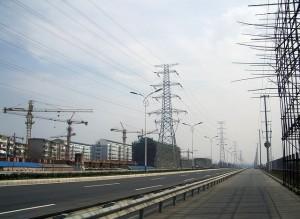 The Japanese government approved on April 3 the Policy on Electricity System Reform, the most sweeping changes to Japan’s electricity utility regulations in decades. As reported in an earlier post, the reforms, to be carried out by 2020, include the establishment by about 2015 of an independent body to oversee power supply and demand across Japan, which is currently divided among ten regional utilities. They also include the liberalization by about 2016 of retail markets in order to enable new market entrants to sell electricity to households and small businesses, and the separation of energy generation and transmission operations currently monopolized by the existing regional utilities by about 2020. Legislation to implement these reforms is expected to be introduced in Japan’s Diet for approval during its current session.
The Japanese government approved on April 3 the Policy on Electricity System Reform, the most sweeping changes to Japan’s electricity utility regulations in decades. As reported in an earlier post, the reforms, to be carried out by 2020, include the establishment by about 2015 of an independent body to oversee power supply and demand across Japan, which is currently divided among ten regional utilities. They also include the liberalization by about 2016 of retail markets in order to enable new market entrants to sell electricity to households and small businesses, and the separation of energy generation and transmission operations currently monopolized by the existing regional utilities by about 2020. Legislation to implement these reforms is expected to be introduced in Japan’s Diet for approval during its current session.
These reforms, when implemented, stand to bolster efforts in Japan to increase renewable energy generation, supply, and use, including by removing regulatory and market impediments that have constrained their expansion. By increasing opportunities for new market entrants and eventually decoupling electricity generation and supply, they will significantly augment Japan’s feed-in tariff implemented last year. Over time, these reforms should help to reduce Japan’s high electricity rates, increasing households’ purchasing power and enabling businesses to cut costs and make new investments (including in renewable energy resources).
The devil will, of course, be in the details. These reforms will be immensely complex to implement. Japan’s regional electricity monopolies, which have traditionally been close to Japan’s ruling Liberal Democratic Party (LDP), retain significant influence despite their weakened political position following the Fukushima nuclear power plant disaster. The Financial Times reported that an LDP committee added language to the original proposed policy that the government guarantee “stability” of electricity supplies before permitting new entrants in the electricity market. While pragmatism is essential for these reforms to proceed, ambiguity in the definitions and timelines set forward in the new policy could lead to challenges down the road, particularly for renewable energy resources such as wind where technological solutions to managing intermittent generation are still works in progress.
Also shaping the environment in which these reforms will take place, and the implications for renewables in Japan’s energy mix, are the future of Japan’s nuclear energy sector and the prospects for access to U.S. shale gas exports. The LDP has long been friendly to nuclear power, and Japanese Prime Minister Shinzo Abe has said he would support the restart of mothballed nuclear reactors that meet stronger new safety regulations. As Japan’s Nikkei pointed out in an editorial, clarity for the nuclear sector–which powered nearly a third of Japan’s energy supply prior to the Fukushima disaster–needs to be addressed one way or the other as these reforms proceed. Additionally, Japanese companies are eager to obtain access to U.S. shale gas, to which their access is limited under U.S. laws restricting its export. While permits for exporting U.S. shale gas face domestic political opposition from several quarters, if Japan succeeds in becoming a major importer and shale gas a significant part of Japan’s energy mix, this could also factor into the course of reforms and the outlook for renewables.
Image Source




